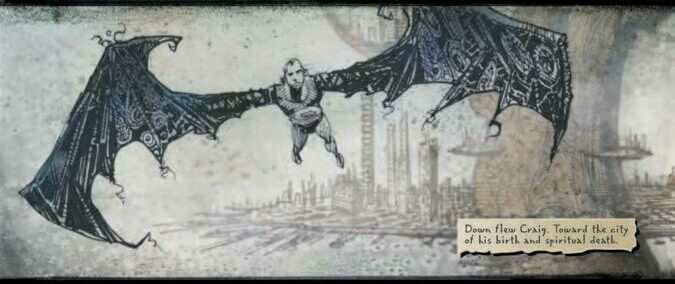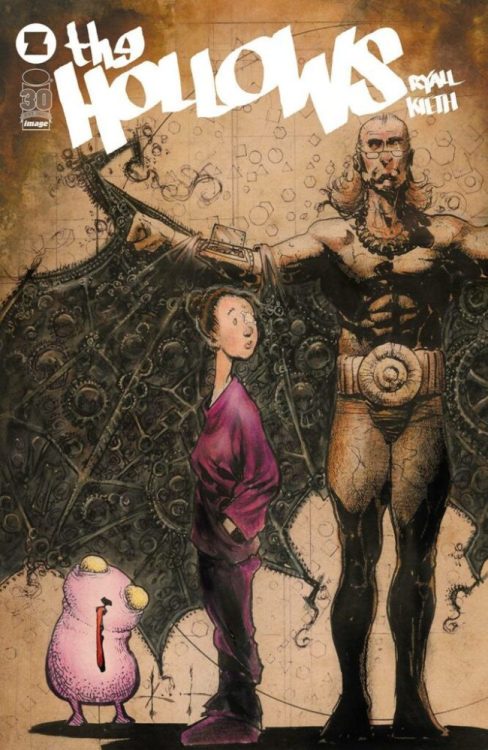The Hollows is a comic about second chances. So it’s fitting that it’s getting another shot at the stands. Originally a mini-series from IDW, this oversized release from Image collects all four issues into a single package. Writer Chris Ryall, artist Sam Kieth, and letterer Robbie Robbins work together to tell a story of a post-apocalypse defined by hazy sadness, rather than anger or a relentless survival drive. And yes, there is the possibility of redemption. Just don’t expect it to come easy.

In the near-future, Tokyo has been ravaged by the aftereffects of a nuclear reactor meltdown. The most dangerous product of the disaster are the “hollows,” zombie-like irradiated humans who are drawn to suck the souls of the living. To escape the monstrous horde, the affluent have built cities atop giant trees while the poor are forced to fend for their own in a toxic wasteland. Inventor Craig Mayerick lives in one of those treetop cities, wracked with guilt and working tirelessly to fix the world below. But that doesn’t stop him from occasionally donning homemade wings and raiding the lower world for supplies to aid his family. When one of those supply runs ends in a crash landing, Mayerick suddenly finds himself having to rely on a poor group of survivors for his own survival.
If there’s one thing The Hollows has in abundance, it’s ideas. Ryall pulls together many disparate genre concepts, from an ethereal, almost supernatural take on zombies, to steampunk flight suits and a strange little mascot named Urp. There’s also a clear emotional through line with Mayerick coming to terms with his guilt and finding a way to atone for his past. The main problem is that the two don’t always align. With the details of the world left dreamy and unclear, Mayerick’s internal monologue often turns to explaining his emotions in each scene, as if to compensate.

But it’s the dreaminess that gels best with Kieth’s art, which uses pencils and watercolors to render a world that’s constantly dipping in and out of focus. Sometimes a character’s face will be drawn realistically through light pencil shading, but the very next panel they may take on cartoony outlines and simple dot eyes. Backgrounds are moody splashes of color, only showing background details where absolutely necessary. It makes for a fragile, lonely world. So the more conscious attempts at adding structure and explaining emotion, like when Mayerick’s wife points out his growth with “My husband does not talk about his experiences here, but he has made a profound change,” stick out from the more loose, freewheeling art. There’s undeniable moments of beauty. But with some unevenness getting there.

Robbie Robbins provides the lettering, and his slightly shaky balloon lettering fits Kieth’s intentionally loose hand, even opting to draw word balloons with outlines that don’t fully connect from end to end. Internal monologues are placed on backgrounds resembling torn scraps of paper, often color-coded to the narrator they come from. For example, Mayerick’s thoughts are backgrounded by the predominate brown of his flight suit, while survivor Lani thinks in the bright pink of her oversized sweater. The monologues stick out the most however, with a more stark, digital look in contrast to the textured, hand-drawn art.
VERDICT
The Hollows sticks out from other post-apocalyptic comics by presenting a hazy world of radioactive soul-suckers and steampunk flight suits that looks unlike anything else on the stands. While it can be overbearing in its narration, there’s still a world and characters here worth exploring. It’s out today from Image Comics, so make sure to seek it out.


